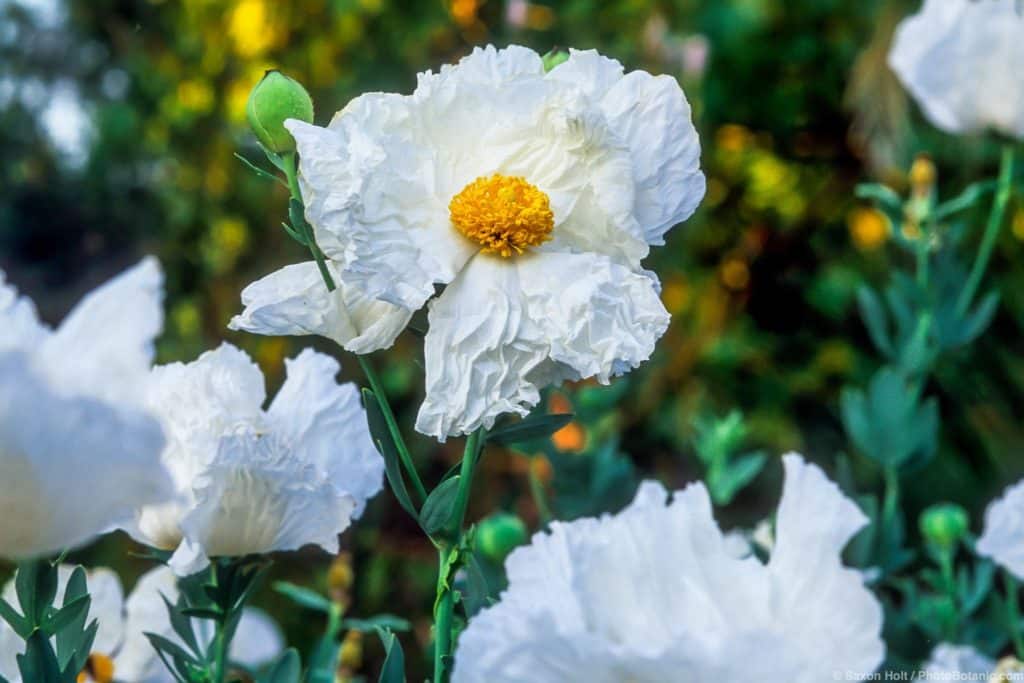You will hear that Matilija poppy (Romneya coulteri) is hard to start and hard to stop, and to some extent this is true. But if you plant this magnificent California native from one-gallon cans in late fall or early winter, and the spot you choose has excellent drainage (hillsides, mounds, raised beds), you should have self-sustaining plants by the second year.
Plant carefully without disturbing the roots. Water thoroughly at planting and weekly through the first summer. The huge (4-6 inches across) white, crepe-papery flowers with bright yellow stamens each last about a week and then cleanly drop all their petals. The bristly seed pods are attractive among the flowers, which continue to open for weeks. Leaves are bluish gray-green, and stems can rise 6 to 8 feet tall or more. In a few years you will find yourself waiting expectantly for early June, just so you can experience the heart-stopping display.
Matilija poppy does spread a bit, especially in irrigated gardens, but you can cut out new plants with a shovel (they spread by underground rhizomes). Or, if you have a large area that is not watered in summer, just let them spread. Without supplemental summer water, on a sunny slope, three plants may become three dozen or more in ten or fifteen years.
In normal water years, Matilija poppy receives enough rainfall to take plants through the summer with no help at all. If rains fail, they will still grow and bloom without summer watering, but the flowers will be smaller and the plants will die back more quickly.
After plants finish blooming and the leaves turn brown, you can cut the stems back to about a foot above the ground for a neater appearance or for fire safety. They’ll shoot up again to full height by next spring and bloom again in early summer.






Leave A Comment